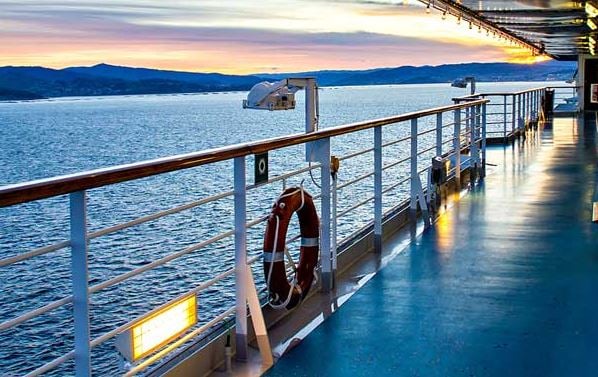

The cruise ship industry sees nearly $38 billion in revenue annually around the world, with more than $15 billion invested into new cruise ships1. Ferries, cruise ships, and other passenger vessels are a much different exposure than cargo ships that carry dry cargo, not people. Accidents and catastrophic mechanical failures with passenger vessels often result in lawsuits and more expensive claims.
Insurance Market Source connected with Andrew Hills, Managing Director, Lochain Patrick Insurance Brokers, Robert Hubbard, Director, Lochain Patrick, and Patrick Barco, National Product Leader Marine, Burns & Wilcox Canada to understand the complexities of Commercial Marine insurance.
Insuring cruise ships
“Cruise ships present underwriters with some complex and significant exposures when compared to other types of ships. Additional risks occur because there are many, sometimes thousands, of passengers on board,” said Hubbard. For instance, due to close proximity, illness or disease could spread throughout the vessel.
In cases like these, the ship owner can be negligent and held liable. Protection and Indemnity (P&I) insurance provides cover for the legal liabilities of a ship owner, including removal of wreck, pollution and liabilities to crew and third parties, such as passengers.
The highest profile accident and most expensive marine claim in recent history is the disaster involving Costa Concordia. The captain of the Costa Concordia came too close to the Italian coastline, running aground. This led to terrible loss of life, a very difficult salvage process, and a $1.85 billion (EUR 1.5 billion) price tag2.
Compared to conventional cargo ships, passenger cruise vessels can be more significant in value, in part due to all of the expensive fixtures and fittings, according to Hills. “It is much more expensive to build bedrooms than a cargo hold,” he said.
With the cost of a new luxury cruise ship ranging from $260 million to $1.3 billion3, very few companies can afford the cost, and there has been consolidation in the sector.
These large commercial passenger vessels require multiple types of insurance including Hull and Machinery coverage for physical damage to the ship and working parts, increased value and war instances, loss of earnings, and business interruption, among others. Hubbard pointed out that cruise ships also now go to some very remote places, such as Alaska and Antarctica, which adds another consideration to the underwriting process.
Local travel by ferry
“There is a massive differentiation between insuring blue water passenger vessels and brown water local ferries,” said Barco.
Type and size, passenger capacity, and distance travelled are some of the key requirements besides a completed application form. Trips on these local vessels run from just minutes in length to a few hours per trip. Hull and Machinery insurance is garnered for physical loss and damage, with the potential for brokers and agents to place a variety of extensions based on other exposures, including:
Ferries that carry passengers and vehicles need to make sure sufficient liability insurance is in place, ensuring that the boat complies with statutory limits. Barco explained a passenger’s automotive insurance policy in most cases will cover the loss of vehicle, if a ferry capsizes, and then subrogate against the ferry insurer. However, individual insureds need to be upfront with their auto insurance company that their vehicle regularly travels by ferry.
Preparing for the application form
Brokers and agents can help prepare insureds for a Commercial Marine application by knowing the following information upfront:
These details are compounded when considering a fleet of passenger vessels, which is commonly the case. Target classes may include tour boats, dinner cruises, floating lodges, sightseeing or fishing charters, workboats, research vessels, tug and barges to name a few.
Insurance in the marine industry is not for the faint of heart. In 2016 alone, insured losses in Commercial Marine exceeded $2.4 billion globally4. According to Barco, brokers and agents that do not work with this coverage on a daily basis are encouraged to team up with a trusted partner to navigate these waters.
Sources:
